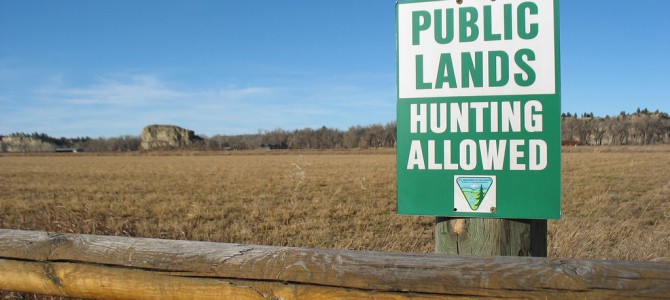
Few people expected Cliven Bundy to become a poster child for federal lands policy in the West, but when some people–perhaps a little too eager for a hero–took up his cause, a national story was created out of a property dispute. Meanwhile, the larger issue of unfair and harmful federal land policies got lost in the clutter of the case’s unique details and Bundy’s offensive racial comments.
Federal ownership of 600 million acres–nearly 50% of all land in the West–has been debated and contested for 150 years. It was contentious before Bundy’s case, and it’ll be contentious long after. Western states have pushed back every time Beltway landlords have imposed significant management or policy changes. We’re in the midst of another one of those pushback periods, but it’s different this time.
The people fighting federal land control now have tangible objectives that go beyond their individual dilemmas or interests. Agriculture, timber, extraction, and even segments of the recreation industries are reeling from the effects of reduced access to areas that have traditionally provided shared benefits through multiple-use policies. These multiple-use areas are shrinking, though, as federal bureaucrats increasingly fence off enormous swaths of land.
The current rebellion — this War for the West — is focused mostly on demanding that the federal government agencies transfer their multiple-use lands to the states. To succeed, it will have to answer three basic questions: Is this transfer legal, is it possible, and is it in the West’s and nation’s interest?
The legal question will probably take the longest to resolve, no matter how the other two questions are answered. Many analysts assert that states simply can’t tell Washington, D.C. what to do with its lands, citing the U.S. Constitution’s Property Clause. They also point out that most states’ Enabling Acts – the contract with the federal government that brought them into the union – include language that transfers the title to open lands within their boundaries to the federal government.
But critics conveniently omit the Enabling Acts’ follow-on language that creates a duty on the federal government to dispose of that land so states can benefit from its productive use. Donald Kochan outlines this and other arguments in a recent BYU Law Review article examining Utah’s H.B. 148 Transfer of Public Lands Act, concluding the legal case “ … may not be a ‘slam dunk,’ but there are legitimate arguments to support the law.”
Answering the question of whether federal lands transfers are possible is simple. It’s been done before and it can happen again. Starting with former Crown Properties after the Revolutionary War, states have transferred open lands to the federal government to create a clean title, and the federal government then disposed of those lands through grants, sales, homesteading, and a variety of other methods.
That all came to a screeching halt in the late 19th century as the population moved west and the conservation movement took off. That’s why our D.C. landlords own less than 5 percent of the land east of Colorado and nearly 50 percent of western lands.
Would transferring multiple-use federal lands to the states be in the best interest of the states and the nation? That’s easy. Yes.
Western lands have provided cheap, abundant and often renewable food, energy, minerals, timber and recreation for the entire nation for generations. Who better to conserve and steward those resources than the people who live on the lands and have tended them for generations?
The contention that these lands would be sold off to the highest bidder and ravaged goes against history and against common sense. Those of us who live, work, and play out here do so because we love our home.
States are simply better at managing public lands. A recent study looking at Nevada, Idaho, Arizona and New Mexico found that federally managed land yielded a net loss of 91 cents per acre, while state-managed land netted a $28.59 gain. The difference is accountability.
State residents can demand good stewardship of their state and local officials. They have little to no say over federal management practices, and certainly less say than well-funded special interests with little regard for those residents’ schools, roads, safety and livelihoods.
The answer is simple, but it will take time. Western states can and do manage public lands effectively, balancing multiple uses with long-term conservation and the betterment of the human condition. The Bundy case helped bring this issue to a national audience, but it’s barely a skirmish in the decades-old War for the West.
Carl Graham is the director of the Sutherland Coalition for Self-Government in the West.








